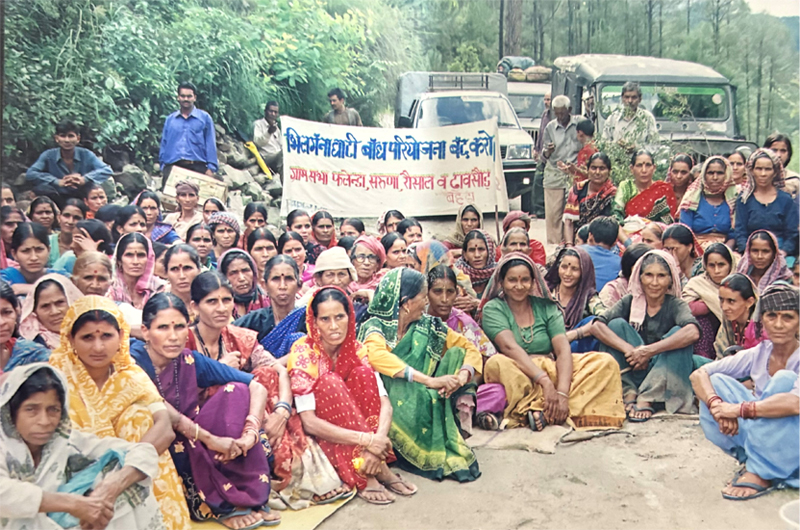The scenic beauty of the Himalayan Region is deceptive, feels Bharat Dogra, who warns that indiscriminate exploitation of natural resources and ill-considered policies are heightening the dangers of climate change in this ecologically fragile region. The region needs a combination of developmental and social reform, development planning being in sync with the real needs of the people there, with emphasis on decentralisation, environment protection and special care of weaker sections, he says
Most Himalayan villages are extremely beautiful. However, the beauty hides some deeply worrying ecological and social aspects which cannot be ignored, especially as they are worsening. In geological terms, the Himalayas are fragile, young, and unstable. They are constantly signalling the message ‘Handle with care!’ Unfortunately, this simple message is ignored all too often.
As big business interests indulge in indiscriminate construction and mining activity with the blessings of corrupt officials and politicians, the vulnerable hills are weakened by blasting work and heavy machinery. In some places, careless, heavy construction has taken a toll. Dam builders often do not exercise adequate care to observe all the safety precautions. The debris of construction work is thrown into rivers, increasing the destructive capacity of floods, or irresponsibly strewn around, upping the chances of landslides. Sand-mining in rivers heightens the threat of erosion and floods. Trees are felled in huge numbers in the hurry to execute big construction and mining projects, ignoring the multifaceted ecological harm and destabilisation of slopes this causes.
Such unconsidered actions have actually intensified at a time when there should have been much greater restraint in response to the worsening disaster situations related to climate change. In recent times, there have been more incidents of excessive rain concentrated in very short periods, leading to higher possibility of flash floods and other calamites. Indiscriminate construction and mining activities exacerbate this danger.
At the same time, problems related to droughts and water scarcity are also increasing, as water springs are depleted or destroyed and other traditional water sources are harmed. With weather patterns changing and the dry season often getting extended, the risk of forest fires has increased, but some man-made factors have also contributed to this. Migration in search of work has made it more difficult to take up protective work.
Several Himalayan communities have established distinct life and livelihood patterns in keeping with local conditions. It is very important to understand these and respect their knowledge of local conditions. Sadly, this is not done often. The life patterns of various nomadic and semi-nomadic communities, for instance, have not been properly appreciated, with the result that policies not suitable for them are being imposed on them.

Over-centralisation of decisions and plans without giving due consideration to possible adverse impacts on people has frequently proved very harmful. The harm is exacerbated for the poorer people and weaker sections who are already marginalised. The problems of the Dalit Communities in several parts of the region have not received adequate attention, particularly in Uttarakhand State, where the adverse impact of anti-Dalit feelings spreading at the time of the agitation for a separate state has added to the community’s woes.
The high consumption of liquor and other intoxicants in many villages has been a matter of serious concern. The problem has worsened with liquor vends opening close to several villages. Keeping in view the natural beauty, biodiversity and forests, as well as other assets of the Himalayan region, old livelihoods can be strengthened in new ways and several new earning opportunities which are not harmful for environment can be promoted. But this hasn’t happened adequately, particularly in the more remote areas.
The Himalayan region needs a combination of developmental and social reform. Development planning should be in keeping with the real needs of the region’s people, with emphasis on decentralisation, environment protection and special care of weaker sections. Women, who contribute greatly to farming and rural economy, should be at the centre of decentralised planning and decision-making. Dalits and the poorest, weakest households, including those who may have faced isolation or injustice in the past, should get special attention to ensure their protection and welfare. Tourism should be seen more in terms of helping rural and ordinary people than as a means of promoting big hotel chains and, in this context, eco-protective tourism should get special attention. Folk arts and artistes as well as crafts-persons should get more support and encouragement.
(The writer is a senior freelance journalist and author who has been associated with several social movements and initiatives. He lives in New Delhi.)



 from Webdoux
from Webdoux